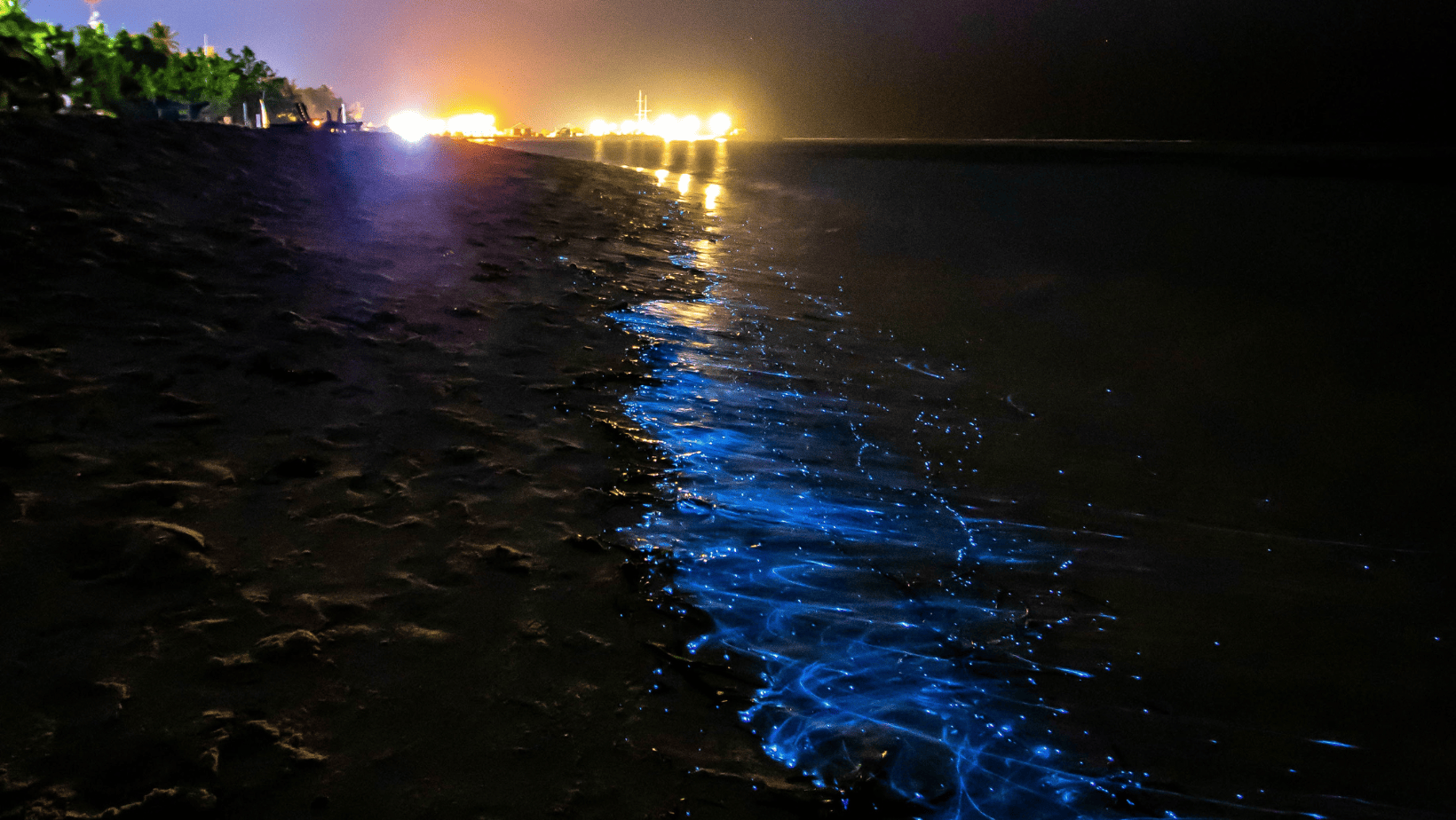
Most people would expect that the beaches in the Maldives and Sri Lanka offer the best experiences in daylight. However, these pristine and white-sand beaches are more than just a place to relax during the day. Once night has fallen, lucky visitors watch the water begin glowing a bright blue, all thanks to a natural phenomenon. But, before you drop everything and book your trip, read our guide ‘Thing to Know about the Glowing Beaches’.
The shores of Sri Lanka and the Maldives are already a dreamy destination for a trip, however, if you are wanting to include visiting a bioluminescent beach for the chance to see it yourself, speak to one of our travel experts today.
What causes the beaches in Maldives and Sri Lanka to glow?
Bioluminescence is the reason for these glowing beaches. Bioluminescence is the emission of light by a living organism. There aren’t many species that have bioluminescence abilities. The Maldives and Sri Lanka are the hosts to one of these species: bioluminescent plankton.
The plankton glows when disturbed; this can be by waves crashing into the beach or someone throwing a rock into the sea. This disturbance causes the plankton to have a chemical reaction that creates light. A blue/green light released by the plankton creates an otherworldly experience and highlights the beauty and diversity of the marine life in the Indian Ocean.
Although it is possible to witness this wonder at all times of the day, it is most visible and memorable at sunset and nighttime when the bioluminescent plankton can show off their magic.

Is it safe to swim in the glowing waters?
Although it may look harmful, swimming in the glowing waters of the Maldives and Sri Lanka is generally safe. The glow is not harmful to humans. However, swimming in the dark has its own risks, like obstacles in the water and lack of visibility.
If you do go swimming while there’s bioluminescence in the water, you should consider the impact of doing this on a fragile ecosystem. Even though they’re tiny, these bioluminescent beauties play a vital role in the ecosystem. They act as a food source and help the ocean’s carbon dioxide level. With global warming, it’s crucial to preserve and maintain this small, yet mighty ecosystem.
How long does the glow last?
It’s hard to estimate how long this event can last. It can last a few days up to a couple of weeks; it just depends on how much plankton there is. But, there’re many factors which can impact the length of time bioscience is in the water: water temperature, tides and weather all play a part in this.
It also varies from year to year and even beach to beach. Although technology is becoming more accurate, unfortunately, this stunning phenomenon isn’t straightforward to predict.
When’s the best time of year to see the glowing beaches?
It’s not always easy to predict when the glow will appear. Experts are trying to make it easier and more accurate which means hopefully it’ll be easier to see in the future. Luckily for now, if you’re planning a trip to see it yourself, there’re some times of the year which are more likely than others.
The most likely time is April to November, but within that, the most action tends to happen in September and October. The water temperature then is perfect for the tiny organisms to grow.

Where are the bioluminescent beaches?
The Maldives:
- Vaadhoo Island: This small island in the Raa Atoll is famous for its stunning bioluminescent beach, also known as the Sea of Stars. A 3-hour flight from Male, the Maldives’ capital, Vaadhoo is often the first place people recommend when it comes to seeing a glowing beach. The glow is most visible during the months of June to October.
- Hulhumalé Beach: Located in the Maldives, this is another stunning destination known for its bioluminescent phenomenon. The glow can typically be seen from April to November, with the most intense displays occurring in September and October.
Sri Lanka:
- Kalpitiya: Located at the entrance to Puttalam Lagoon, Glowing beaches have been spotted around Kalpitiya with photos shared on social media. The Lagoon itself has been included in studies of bioluminescence activity in Sri Lanka.
- Galle Face Beach: In addition to Kalpitiya, this beautiful beach located in the eastern part of Sri Lanka is a spot for witnessing bioluminescence. During the months of March to April and October to November, the glow may be visible.
If you are considering a trip, ETG can help by working with trusted local guides and experts. We aim to make your trip unforgettable. So you decide where to go and whether you want to visit bioluminescent beaches and anything else you may want to experience. Let’s talk on 020 7924 7133

CURIOUS TRAVELLER'S GUIDE TO SRI LANKA
Wondering when to visit Sri Lanka? Our Curious Traveller’s Guide to Sri Lanka will give you a more detailed breakdown of the best time of year to book a holiday, as well as tips on the best beaches, unmissable sites, and much more.
DOWNLOAD NOW
The Maldives Edit
With SO many Maldivian resorts to choose from - many of which, let’s be honest, look pretty similar online - it can be tricky to tell which is the right one for you. So our experts created this guide to their top ten hotels and experiences across the country. Whether you’re looking for wildlife encounters or the ultimate luxury, this where you’ll find the best of the best.
DOWNLOAD NOW
